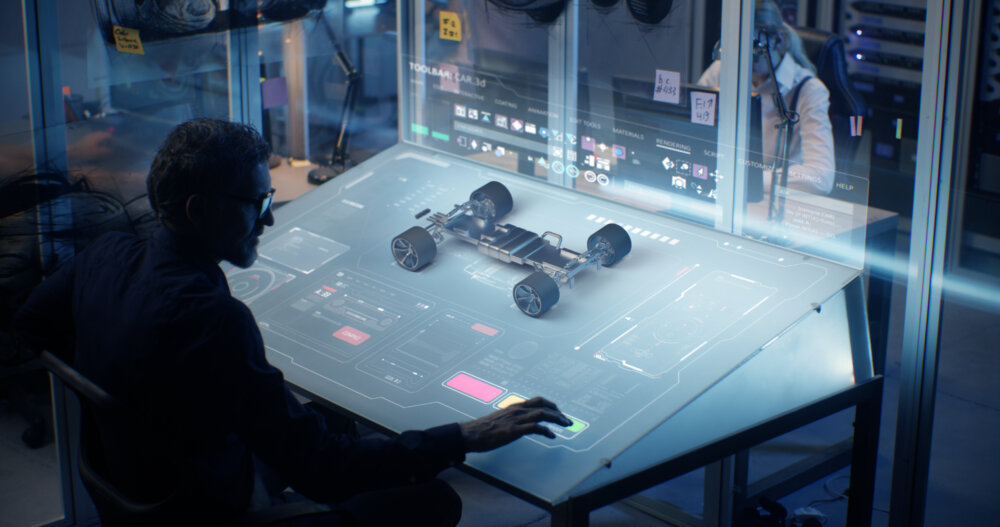
What will 6G mean for business?
Businesses have always thrived on communication. With each new breakthrough came a new way to make money, whether that was the birth of the postal system or the launch of mobile connectivity back in 1979.
That came when Japan’s Nippon Telegraph and Telephone (NTT) introduced the first generational cellular network; 2G launched on the Global System for Mobile Communications (GSM) in Finland in 1991. Meaningful data bandwidth arrived with 3G a decade later, when NTT DoCoMo deployed it to the Japanese public in 2001.
Since then, we’ve seen the arrival of 4G and 5G cellular networks. The former became the foundation of the smartphone revolution, leading to the “there’s an app for that” mentality that powered photo sharing, video streaming and the explosive growth of social media.
5G is beginning to have a similar impact on business applications. Its two key traits – high bandwidth and low latency – remove some of the blockers to augmented reality (AR), virtual reality (VR) and real-time data analysis at scale.
In 2023, more than four decades after it all began, mobile operators and telecommunications firms are now shaping the next generation cellular standard: 6G. What will 6G mean for business? As it happens, one heck of a lot.
What is 6G?
What is 6G? The simple answer is we don’t yet know. Not precisely, at least. The final standards that will define it have yet to be decided by the International Telecommunication Union (ITU).
However, industry experts believe that 6G has the potential to deliver speeds of 1 terabyte per second, or 8,000 gigabits per second. That’s a thousand times faster than most broadband connections today. Enough to download 142 hours of Netflix’s top-quality video every second.
That is still some way off, however, as 6G isn’t likely to become commercially available until around 2030. Despite this, the race to 6G is already drawing the attention of many industry players: Huawei, Nokia and Samsung have all signalled that they have 6G R&D in the works. Separately, Ericsson has said it will invest millions of pounds in 6G mobile research in Britain.
6G in business
To see what 6G can do for business, we need only look at the effect 5G is having. While the phrase “digital transformation” is over-used, it’s also highly relevant here: 5G is helping businesses embrace technologies as the Internet of Things (IoT), workplace automation and digital twins. We cover all of these in more detail later.
6G could have an even greater impact on business. A report from ABI Research said that while 5G’s lower latency, higher bandwidth and greater reliability all improved network performance, 6G takes it still further. ABI Research sees 6G as an enabling platform for innovations in everything from artificial intelligence (AI) to immersive virtualisation.
Immersive reality
One of these areas of innovation is next-generation immersive reality technologies. While 5G played a big role in the rollout of virtual reality (VR), 6G is expected to enable experiences several steps beyond. Think truly immersive extended reality (XR), high-fidelity mobile holograms and digital replica.
Experts believe that 6G will also help make these technologies more accessible to businesses on a major scale by allowing organisations to create XR interactions with minimal demands for power consumption and bandwidth. For example, 6G could help companies to leverage the benefits of edge-based cloud computing for XR environments.
Others believe 6G could be the enabler of the metaverse. In a February 2022 podcast, Peter Vetter, president of Bell Labs Core Research, stated that it will “unleash new human possibilities”.
“What 5G has done is connect humans with machines. What we are expecting [with] 6G is much richer connectivity of the machines and the human world with the digital world. That is enabled by massive scale deployment of sensors, sensors that in real-time capture the state of the physical world. And then the massive scale deployment of AI that allows us to understand what is happening in the physical world.”
In essence, this is building a true digital twin of our world. Something that brings enormous potential for businesses. To an extent, it even allows businesses to see into the future: they can simulate current conditions and then experiment to predict future outcomes.
Haptic internet
This extends to forms of holographic communication. One recent study builds on the idea of a “haptic internet”, with the promise of “touch and actuation at real-time”. Perfect for surgeons operating remotely, for example. Others have speculated that 6G’s vast data capability could supplement sight and sound with the capacity to communicate touch, taste and smell in real-time.
These 6G-enabled immersive reality experiences are also expected to have a major impact on the workplace itself. While working from home and videoconferencing have become commonplace over the past few years, some forward-thinkers believe 6G could redefine how we communicate remotely.
For example, we could see users interacting with digital replicas of other humans or objects in real-time using multi-sensory interactions to create a fully merged cyber-physical world.
NTT – the company responsible for the world’s first cellular network – has far grander ideas. In a whitepaper, the company envisions a future whereby 6G enables the complete fusion of physical life and cyberspace: “For humans, it will become possible for cyberspace to support human thought and action in real-time through wearable devices and micro-devices mounted on the human body.”
Walid Saad, a faculty member at Virginia Tech and the lead author of a whitepaper on 6G, has a similar vision. He predicts that smartphones will eventually fall to the wayside in favour of intelligent wearables, headsets, and implants “that can take direct sensory inputs from human senses”.
Autonomous robots and massive twinning
Since the arrival of 5G, organisations of all shapes and sizes have been quick to embrace artificial intelligence. According to a PWC survey in 2022, 96% of respondents plan to use AI simulations, such as digital twins, that year.
Experts believe the arrival of 6G, coupled with the proliferation of artificial intelligence and autonomous systems, will see robots becoming much more ingrained in our societies and industries. For instance, complex industrial robots that enable flexible manufacturing.
According to Ericsson, these robots will become responsible for even more complex tasks as their capabilities evolve. It foresees cooperative mobile robots, or “cobots”, and collaboration both with humans or other autonomous systems.
Ericsson also believes that 6G will enable “massive twinning”. That is, the creation of a digital twin from humans, physical objects and processes, in order to allow unprecedented experiences and system insight and control.
“This includes both an extension of the digital twin concept of industrial processes introduced by 5G, applying the digital twin for manufacturing, but also an expansion to other fields of society,” says Ericsson.
“For instance, by applying digital twins to sustainable food production, the health, needs, and ailments of crops and livestock can be monitored in real-time, autonomously administering nutrients/food and addressing any threat to increase the yield and reduce the waste.”
Endless opportunities
Ultimately, there are so many potential use cases for 6G to explore that it will take us up to 2030 to describe them.
It will underpin vast urban projects, such as city, traffic and population management. It will help improve our environments with detailed, real-time air-quality monitoring. It will have major security implications, whether that’s an explosion in facial recognition or the potential to embed zero-trust systems onto networks.
The key thing is not to simply sit back and wait for things to happen. You have several years to prepare, to work out how it will impact your business and what new opportunities it will bring. Don’t waste that time.
what to do next
- If you want to go deep, this whitepaper from Japan’s NTT Docomo is a great technical resource that’s packed with thoughts (and detail).
- Have 25 minutes to spare? Listen to the Light Reading podcast from 10 Feb 2022, where Peter Vetter from Bell Labs outlines exactly why 6G matters from his point of view.
NEXT UP

Dell, Hyundai AutoEver and Intel team up for AI edge ecosystem expansion
Dell Technologies has expanded its edge ecosystem with Hyundai AutoEver, a subsidiary of Hyundai, and Intel to boost manufacturers’ ability to optimise output from edge data with AI.

Jeff Engle, Head of Product at BlueVoyant: “Protecting a company from cyber attacks isn’t just the role of the CISO or his team”
In this interview, we hear from Jeff Engle, Head of Product at BlueVoyant, President of Conquest Cyber and a recipient of a Purple Heart, who served in the US Army Special Operations.

State-sponsored attackers backdoor Cisco firewalls to hack into government networks
Cisco has revealed that hackers used zero-day vulnerabilities to gain access to government networks – but we don’t yet know who exactly was behind the attacks
